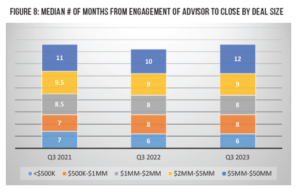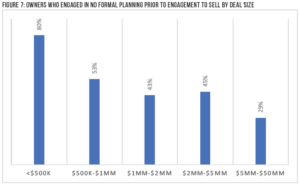What is an equity rollover when selling your business?
In M&A, an equity rollover, or recapitalization (recap), occurs when a business owner sells their company but chooses to reinvest, or “roll over,” a portion of their proceeds into the newly acquired business. An equity rollover allows a shareholder to maintain an interest in the business and benefit from future growth and value creation.
How an Equity Rollover Works
When a business owner is selling, a potential buyer may propose a deal structure that includes cash, debt, and equity. Typically the seller’s M&A advisor will signal in advance to buyers whether an equity rollover or recapitalization will be considered, and buyers factor that into their offers.
Equity rollovers are common when the buyer is a private equity firm or family office. These financial buyers are often looking for the seller or their management team to continue running the business for a number of years until the business is sold again. Equity rollover ensures that all parties are aligned, and that sellers have “skin in the game” and are committed to the ongoing success of the business.
Equity Rollovers by the Numbers
Let’s say a private equity firm is acquiring a software company for $20 million. The seller agrees to rollover $2 million of the proceeds back into the company. In simple math, the seller would retain a 10% ownership stake in the post-acquisition company if the buyer paid the other $18 million in cash.
However, most acquisitions are funded with a combination of equity and third party debt. This leverage increases the share value of rollover funds, meaning the seller’s $2 million translates into a larger percentage of the equity in the new entity.
For example, let’s say the software company is acquired with 50% leverage, or $10 million in debt. With total shareholder equity of $10 million, the seller’s $2 million now equals 20% of the equity (vs 10% in the earlier example). So, the seller receives 90% of the transaction value at the time of sale but retains 20% in the future business.
In reality, the calculation also accounts for transaction fees, capital gain taxes and working capital, but the above scenario provides a fair baseline estimation.
Advantages of an Equity Rollover or Recap
There are several reasons why a seller might choose to roll over equity in an M&A transaction:
- Potential for additional gains: Sellers who roll over equity have the opportunity to benefit from any increase in the value of the company’s shares.
- Increased buyer confidence: When a seller rolls over equity, it sends a positive signal to the buyer. It means the seller has confidence in the company’s future prospects and belief in the buyer’s strategic vision for the business — and may result in a higher initial purchase price.
- Tax considerations: In some cases, equity can be rolled over on a tax deferred basis.
For more information, read our previous posts on equity rollover (recapitalizations):
For advice on exit planning or selling a business, contact Al Statz, founder and CEO of Exit Strategies Group, Inc., at alstatz@exitstrategiesgroup.com. Exit Strategies Group is a partner in the Cornerstone International Alliance.









